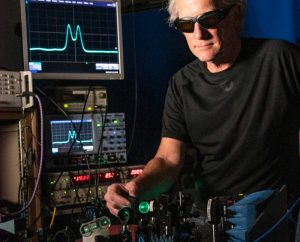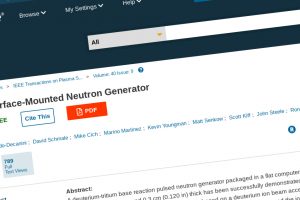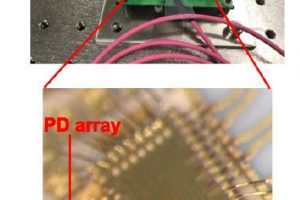
The atoms, cesium in this case, are ‘Rydberg atoms’ – atoms that have been wound up into a high energy state that is extremely sensitive to electric and magnetic fields. In this case the atoms were in a vapour cell, pushed into Rydberg states using lasers ate two different wavelengths.
While many researchers have previously shown that atoms can receive other formats of modulated signals, according to NIST, its team was the first to develop an atom-based mixer that could handle phase shifting.
“The point is to demonstrate one can use atoms to receive modulated signals,” said project leader Chris Holloway. “The method works across a huge range of frequencies. The data rates are not yet the fastest out there, but there are other benefits here, like it may work better than conventional systems in noisy environments.”
 Phase shifted signal with periodic reversals (BLUE) relative to the reference signal (red).
Phase shifted signal with periodic reversals (BLUE) relative to the reference signal (red).
The signal was at 19.6GHz, modulated at up to ~5Mbit/s, and error vector magnitude (EVM) was below 10%, which is decent for a first demonstration – comparable to systems deployed in the field, said Holloway.
“Tiny lasers and vapour cells are already used in commercial devices such as chip-scale atomic clocks,” said NIST, “suggesting it might be feasible to build practical atom-based communications equipment.”
All this is described in the paper ‘Detecting and receiving phase-modulated signals with a rydberg atom-based receiver‘, published in IEEE Antennas and Wireless Propagation Letters (abstract only available free).
According to the paper, the team demonstrated reception of: binary phase-shift keying, quadrature phase-shift keying and quadrature amplitude modulation: “The results show that we can now interrogate ensembles of atoms to such extent that we can use them to receive data from a phase-modulated communication signal.”
 Electronics Weekly
Electronics Weekly



